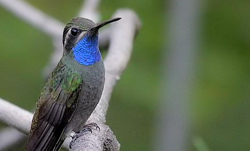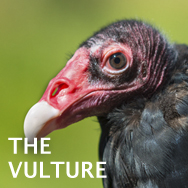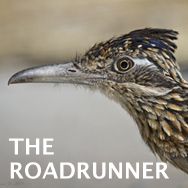

Join BirdNote tomorrow, November 30th!
Illustrator David Sibley and actor H. Jon Benjamin will face off in the bird illustration battle of the century during BirdNote's Year-end Celebration and Auction!
Join Alex and master birdbander, Kelly Bryan, in the Christmas Mountains oasis:
BirdNote contributor Alex Chadwick visited the outskirts of Big Bend National Park in Texas to meet with retired park manager and biologist, Kelly Bryan. Kelly spends his days placing bands on hummingbirds to better know their habits.
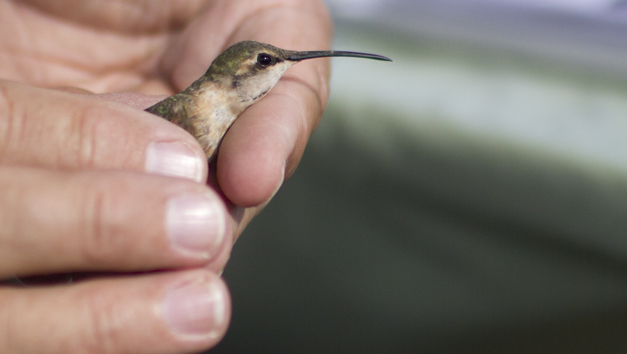
Transcript:
AC: I’m watching Kelly work with the birds…tiny, colorful, delicate…held carefully in his blunt, working hands. He’s banded more than 14,000 hummingbirds, he says, and never injured one. He’s about to release this one.
KB: I'm gonna hold it up to your ear... Sounds like a little motor in overdrive, doesn't it?
AC: The bands are very small, uniquely numbered strips of aluminum, and one goes around one small bird leg above the foot.
KB: The human heart beats about 70-80 beats per minute. Even at rest, the hummingbird's heart is beatin' 7-800 beats a minute. And this little bird's probably at about 1200 beats a minute now.
AC: A hummingbird that Kelly banded three years ago in Texas was caught and identified by another ornithologist in Alaska two years ago. And then she re-caught the same bird last year. That’s their migration – Alaska to Mexico.
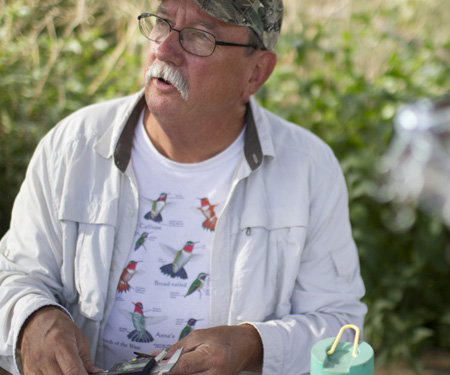
Kelly studies hummingbirds by banding legs and keeping data on each one. He’s normally at it five days a week - today on a friend’s land, surrounded by a grove of trees and hummingbird feeders, carefully placed in open-door bird cages. At the click of a remote, the cage doors close, and the feeding birds inside can be placed in small, mesh bags, and then taken out and banded.
KB: Okay, here comes the first bird….gonna reach into this bag. And the thing about hummingbirds is you've got to maintain control of them.
AC: It can be unnerving to see a captured hummingbird, vulnerable and wide-eyed. Kelly has his fingers over the shoulders, to stop the wings beating. He slips a tiny numbered band on a leg, measures length of feathers and the bill, and then weighs the bird.
KB: You could put about eight of these birds in an envelope and mail 'em.
AC: Eight to an ounce. I called hummingbirds delicate, but they are tri-athletes of the bird world. Barely a tenth of an ounce, and they migrate from Alaska to Mexico and back. And stop to hunt and feed – insects, importantly – all along the way.
There is a pleasing simplicity to banding. It’s almost pre-industrial science - careful observation, meticulous data collection, repeat, repeat, repeat.
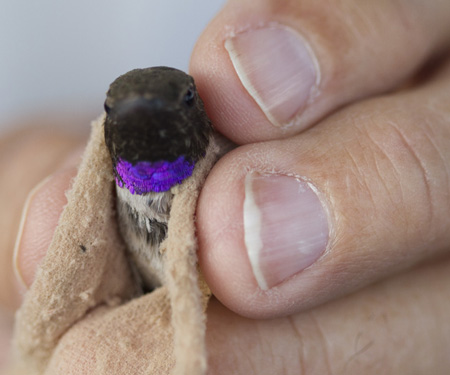
KB: Hummingbirds are kind of changing their patterns…. Especially all these western species that are migrating to the central Gulf Coast of the United States to spend the winter.
AC: These birders share their data and from it, they make a data mosaic of the natural world. And it’s a big pattern.
KB: I don’t know if you know it or not… You know, John James Audubon was the first person to band a bird in the United States. At his farm in Pennsylvania. He saw these Eastern Phoebes coming back to this cave and nesting in the same ledge every year. So one time, he put a wire around the leg of the phoebe. And of course, those Eastern Phoebes migrate; they leave for the winter. And guess what? The next spring, the phoebe came back, started building a nest on that ledge in the cave. And he caught that phoebe and looked at its leg and it had that wire around its leg. So he recognized, back in the 1850s, the importance of having a bird tagged in some way.
AC: Audubon, the founder of American ornithology, naturalist, artist, bird-bander, in a line that now also counts Kelly Bryan in Southwest Texas, ready to release his latest subject.
KB: He's done –- and he goes bye-bye.
AC: For BirdNote, this is Alex Chadwick in Big Bend National Park.
###
If you find a banded hummingbird -- or other bird -- please report it!
This series was produced with generous funding from Deedie and Rusty Rose.
Gallery:
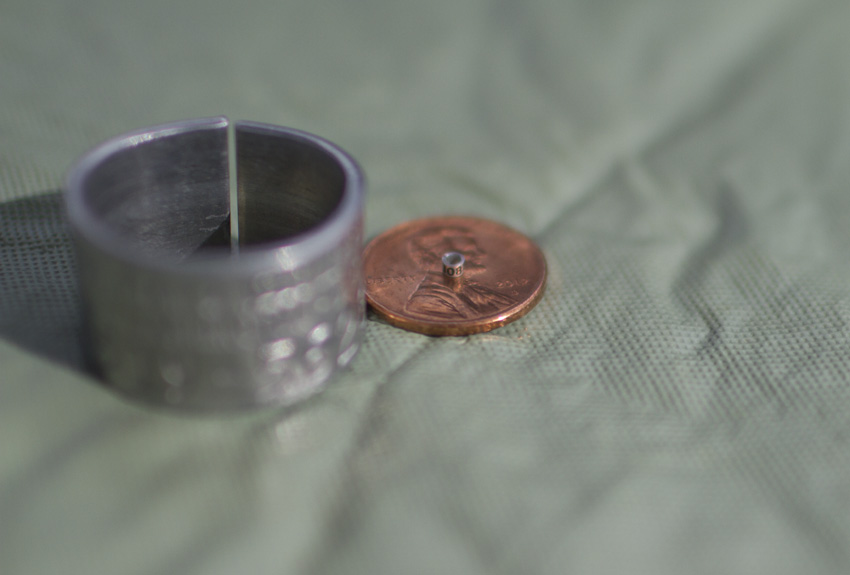
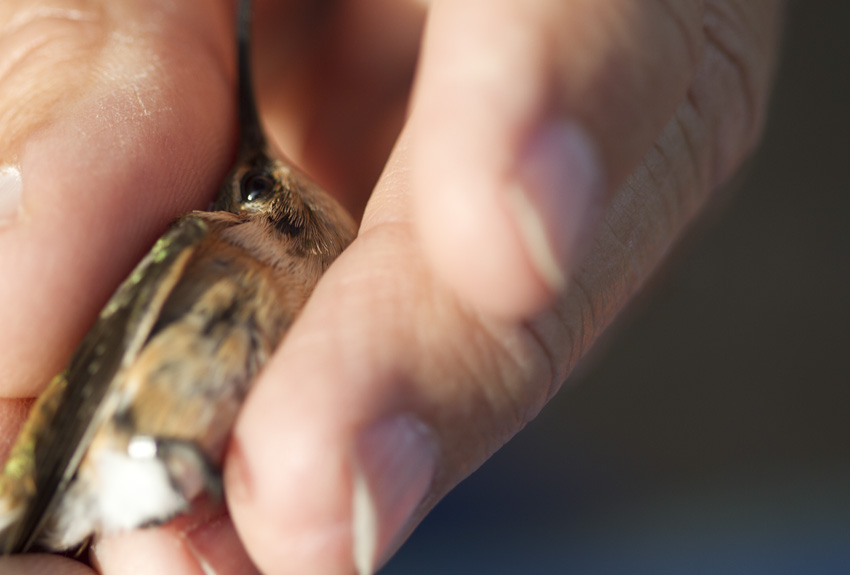
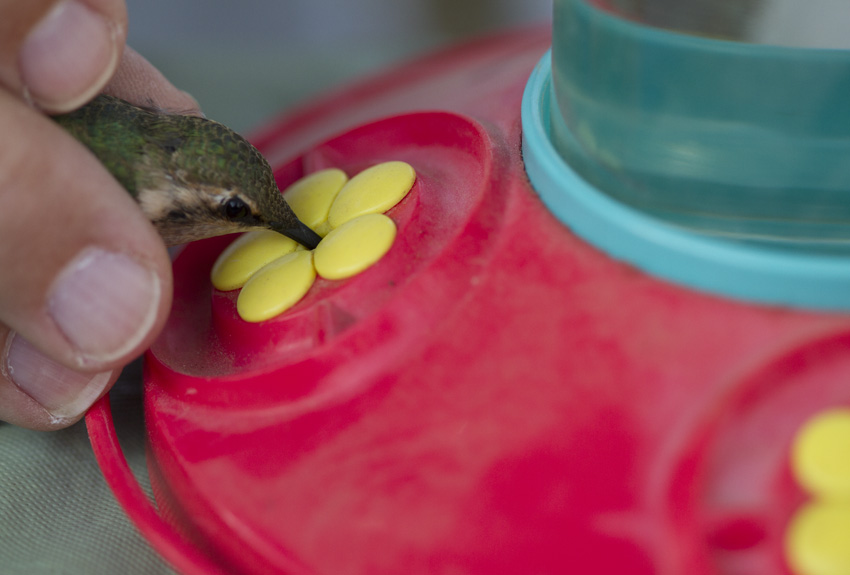
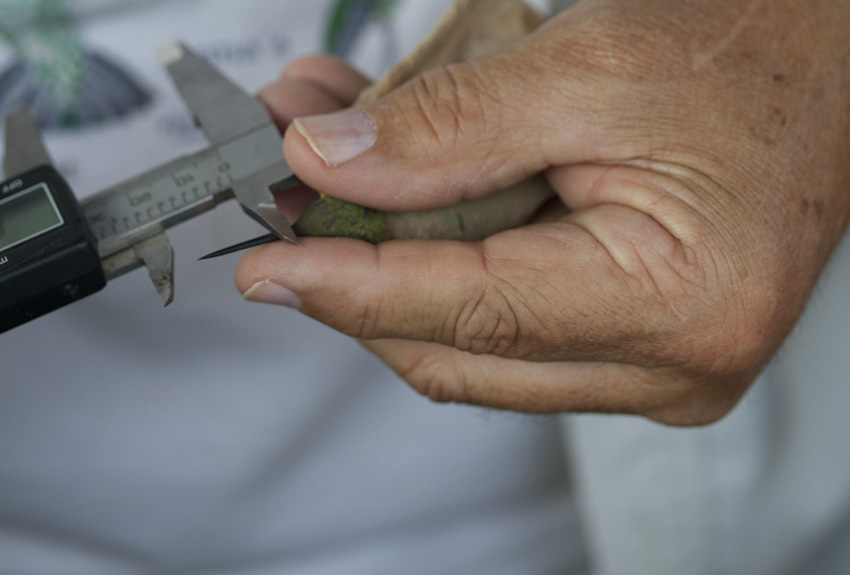
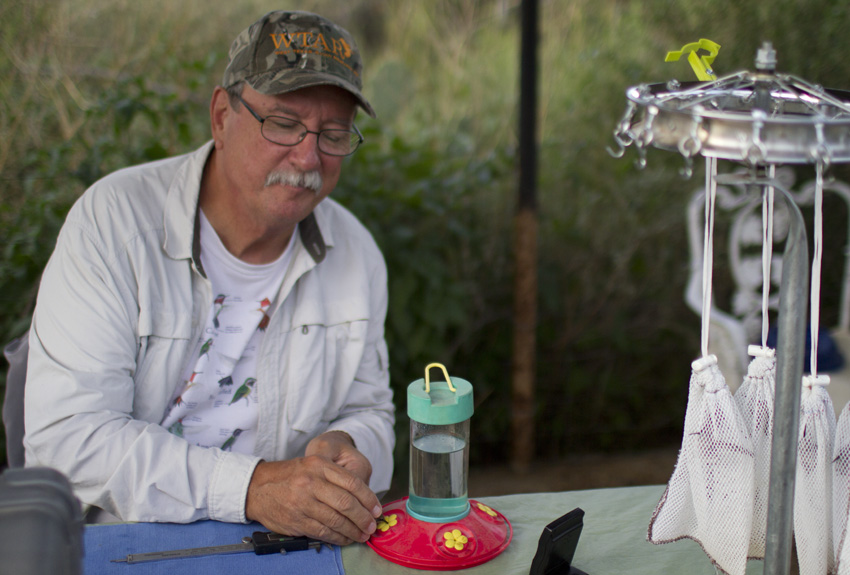
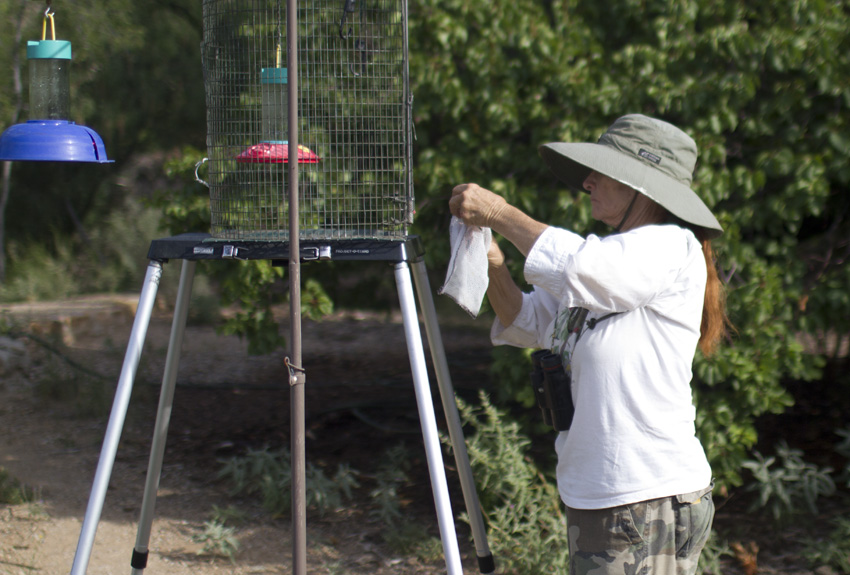
Carolyn Ohl-Johnson is part of the team!
It's a fact!
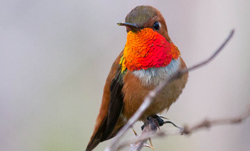
Kelly Bryan & team have banded 15 species of hummingbirds in the Big Bend area, including:
The Blue-throated Hummingbird, the Magnificent, Lucifer, Ruby-throated, Black-chinned, Anna’s, Costa’s, Broad-tailed, Rufous, Allen’s, Calliope, Broad-billed, Buff-bellied, Violet-crowned, and the White-eared Hummingbird --
-- and maybe a hybrid or two!
Rufous Hummingbird © Andrew Reding
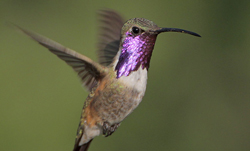
How fast? How far?
A hummingbird can fly straight up and down, backward and forward, even flip upside-down momentarily. It may fly up to 50 miles per hour but can slow from 25 mph to a dead stop in a space no longer than your index finger.
Wingbeats? Up to 70 per second. The smaller the bird, the faster the wingbeats. Some Rufous Hummingbirds may migrate nearly 8,000 miles round trip.
Lucifer Hummingbird © Greg Lavaty
More Big Bend adventures:

